Putting Together A Goat Birthing Kit
Goat breeding and kidding are easier when you are prepared, and that is just what having a kit with support and tools found inside will do. When you are learning how to raise dairy goats breeding is a big part of that.
One of the best and easiest ways to be prepared for kids is to have on hand a fully stocked goat birthing kit.
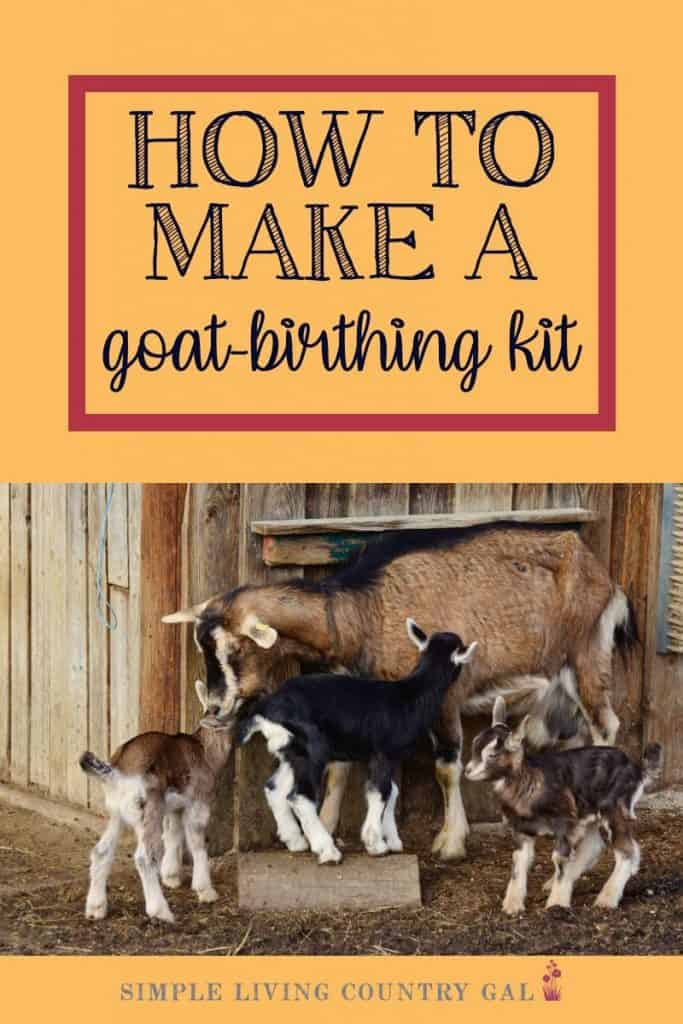
We have all seen them, those adorable goat kid videos on Facebook and Instagram. Baby goat kids running around and jumping is something the new goat owner dreams of and understandably looks forward to.
In my first year of raising goats, I was more excited than prepared. I never in my wildest dreams thought there would be a problem.
Sure, I read up on possible issues and even watched a few deliveries online, but I had nothing prepared. No tools. No supplies. Not a single thing.
The only thing I had ready to go was my cell phone and a few towels. And when my very first doe was unable to deliver her kid, I felt helpless and lost, and the outcome was not a good one, I am heartbroken to say.
Now that I have many kidding seasons under my belt, I know it is better to be prepared for anything just in case a problem does come up.
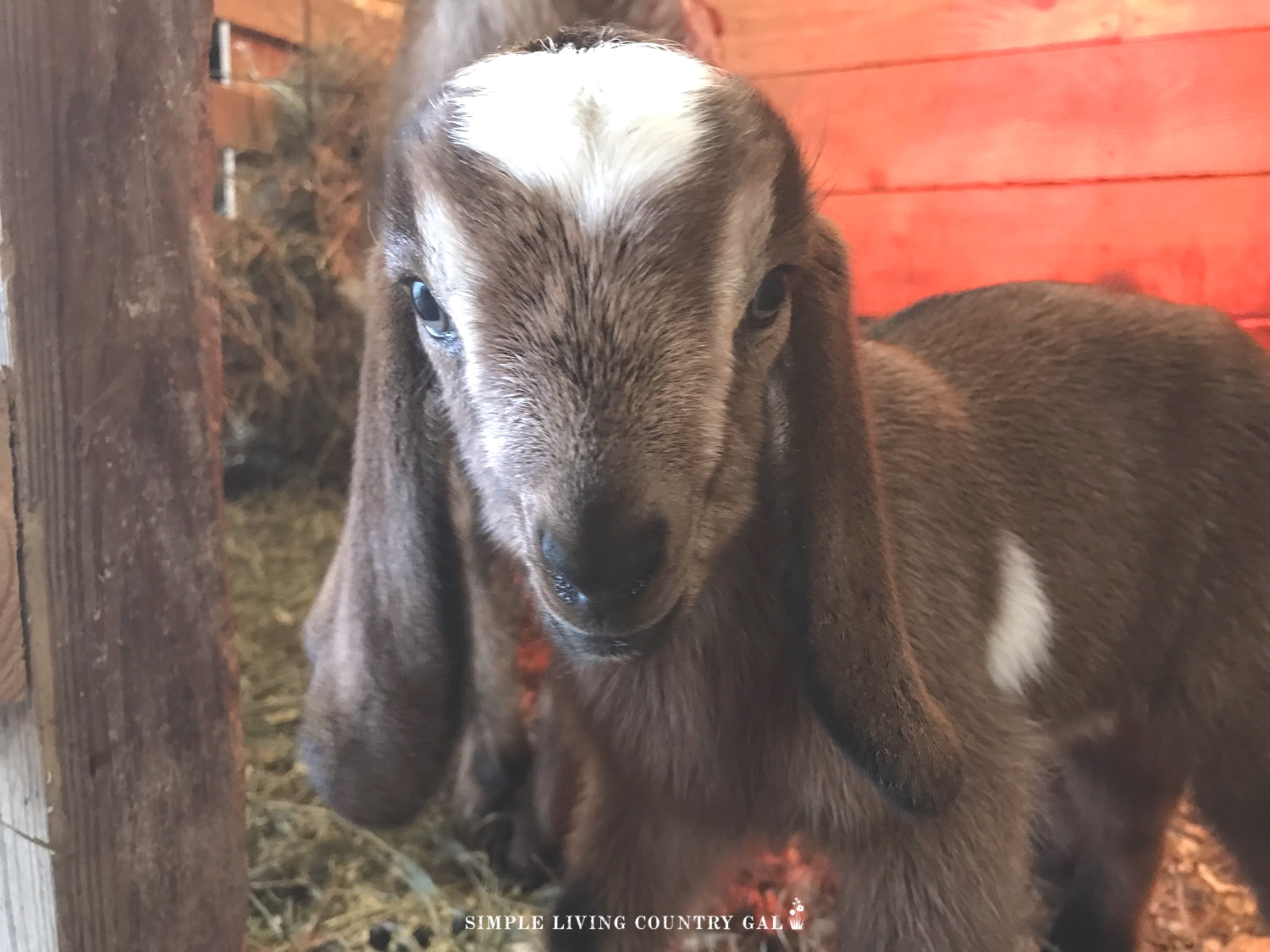
Disclaimer: In accordance with FDA guidelines, the information and products offered on this website are not intended to diagnose, treat, cure, or prevent any disease. I am not a medical professional. Before administering any medications to your animals please contact a veterinarian first.
When you are preparing for goat kidding season, it is important to be ready long before any of your goats go into labor. By having the tools, you need gathered together and near by, you will be better able to handle whatever your goat throws your way.
One of the best ways to be prepared for goat kidding season is by putting together a birthing kit.
Over the years, I have been through just about every single goat kidding scenario, and trust me on this one, it is better to be prepared for what may happen than to panic, looking for supplies if it does happen.
What is a goat birthing kit?
A goat birthing kit is a container such as a tote or a bucket that is filled with all the supplies needed to help a doe during kidding. By having this kit close by, you will ensure you have most, if not all, of what you need to deliver healthy and happy goat kids.
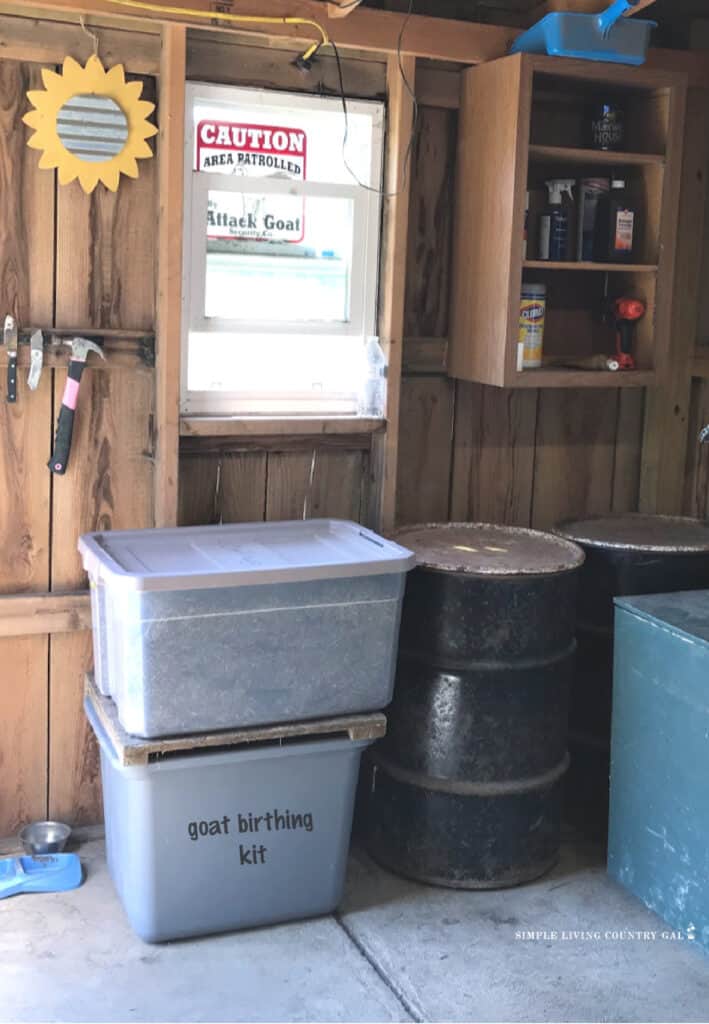
This list I am going to share with you is pretty thorough, and some of the items you may never use, but I have found that if you prepare for the worst, you will save precious time just in case, in that rare event, when the worst actually does happen.
Be sure to grab the FREE Guide Below!!
Before we begin, please remember one thing. 95% of all goat kiddings happen without issue. This is something that is extremely important to keep in mind. Do not interfere until you need to interfere. Until then, let your doe do her job, yet remain close by if she does need assistance.
If you are not quite sure when your goat is going to kid, jump over to my article on GOAT KIDDING SIGNS. This thorough list and helpful video will show you what to watch for so you are ready when the time comes.
Putting together a goat birthing kit
Paper Towels can be quite handy for cleaning your hands and kids’ faces immediately after birth. Goat kids are born with fluids all over their bodies, and it is important to clean out their noses and mouths so they can breathe easier. Using your hands is the natural way to do this, and paper towels will help you dry off quicker.
1. Gloves. Sterile gloves need to be worn in the event you need to assist with kidding. The gloves will also help to keep your hands dry so you can be more efficient with your aid as well.
2. Betadine surgical scrub. This is used to wash your hands if you need to assist with delivery. Never put your hands inside of your doe to adjust a kid without cleaning your hands first and applying some kind of lubrication.
3. Dental floss. Used to tie off the umbilical cord to keep dirt from going in before it seals closed. This needs to be done soon after kidding.
4. Scissors. Used to cut the umbilical cord once it is tied off.
5. 7 percent iodine. Used for dipping umbilical cords once they are tied off and cut. I would also have an old pill bottle. Iodine is staining and by having a small bottle to hold only what you need to dip a newborn kid’s cord you will keep some of the mess to a minimum.
You can also use a shot glass to pour in iodine, but be sure it is plastic.
Agri-Pro Enterprises Lamb and Goat Kid Feeding Kit 1- Tube (14Fr), 1-Syringe (60 ML)



6. Old towels. I like to have a few in my tote to help dry off kids. This can be crucial, especially if you have goat kids that are born in the winter months. Usually, if it’s warm enough, I will allow momma to do the cleanup since this is an important part of the bonding process. If, however, temperatures are really cold, you may want to help a bit here. Frostbite can happen quite fast, especially with newborn kids, so get them dried off quickly if it’s cold out.
7. A flashlight or headlamp. This is very helpful, especially if delivery happens at night or in an area with poor lighting,
8. Bulb syringe. Used to help clean out noses and airways so goat kids can breathe on their own more quickly.
9. A clean, empty pop bottle and a Pritchard Nipple are used in case you have to bottle-feed a goat kid. Most goat owners will introduce a nipple very early to ensure if a bottle is needed later, the baby goat kid is at least familiar with the feel and texture.
10. Your vet’s phone number. I cannot stress enough the importance of having help. If you live in an area that does not have a goat vet then at the very least find an experienced goat friend you can rely on. Have either your vet’s or friend’s number pre-set into your phone and also written on your tote.
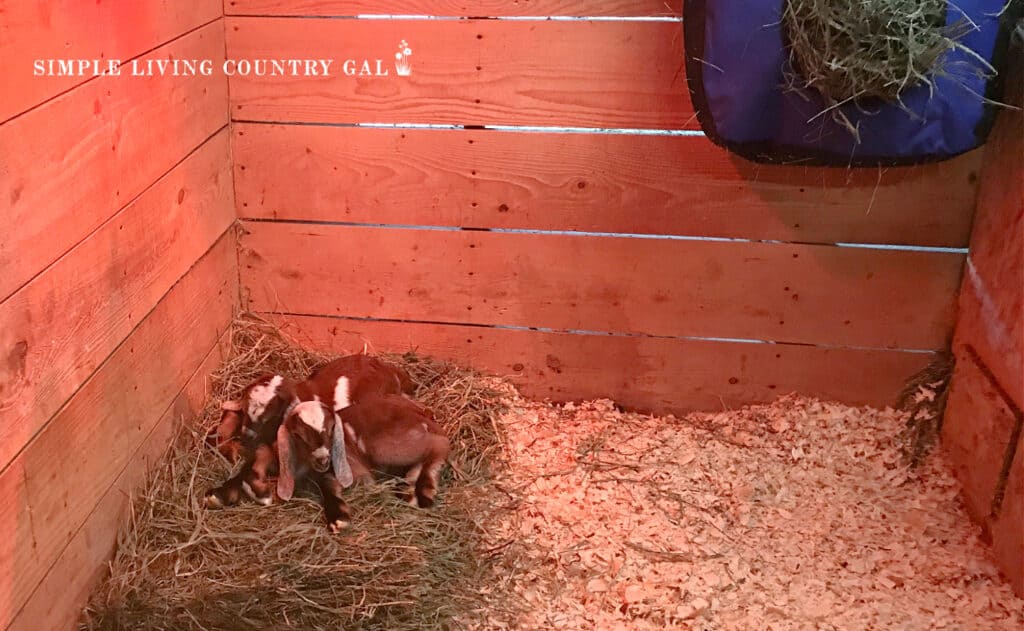
I like to go one step further and make a call prior to kidding, giving a heads-up to my phone helper. This is good especially if your goat ends up kidding in the middle of the night and you need to make a call.
One year, I had a pretty hard delivery, and my vet patiently walked me through what I needed to do over the phone. She kept me calm, told me exactly what to do, and gave me tough love when necessary. Thanks to her help, I was able to get a very large kid delivered without causing injury to him or his mother.
SLCG Pro Tip: If you find yourself in a situation that you are not comfortable with, CALL YOUR VET. They are there for a reason, and having them come out for an emergency farm call is not going to be as expensive as losing your kids and possibly your doe as well. Be prepared, yes, but ask for help if you need it.
11. Storey’s Barn Guide to Sheep. This is my go-to guide for goat kidding. I know this item may seem out of the norm, but I have to tell you that it is by far the best book I have for kidding my goats.
There is a section on positions that really help you to “see” just how a kid may be presenting. In the rare instance where you have to go in and turn or adjust a kid, this book will better help you picture how that kid may be inside the goat so you can more easily reposition them.

Disclaimer: In accordance with FDA guidelines, the information and products offered on this website are not intended to diagnose, treat, cure, or prevent any disease. I am not a medical professional. Before administering any medications to your animals please contact a veterinarian first.
12. A few empty feed bags. These bags can be a lifesaver during kidding. Things can get pretty messy, and these feed bags will keep the mess contained for quick and easy cleanup.
13. OB lube. Used just in case you need to go in and adjust or turn a goat kid. In a pinch, betadine can be used as well. Don’t forget to wear gloves!
SLCG Pro Tip: If you need to go internally to help reposition a kid, be sure to use caution so you do not damage the doe. As a precaution, we like to administer penicillin after internal procedures at the advice of our vet. Be sure to contact your vet on how to administer and what dosage to give.
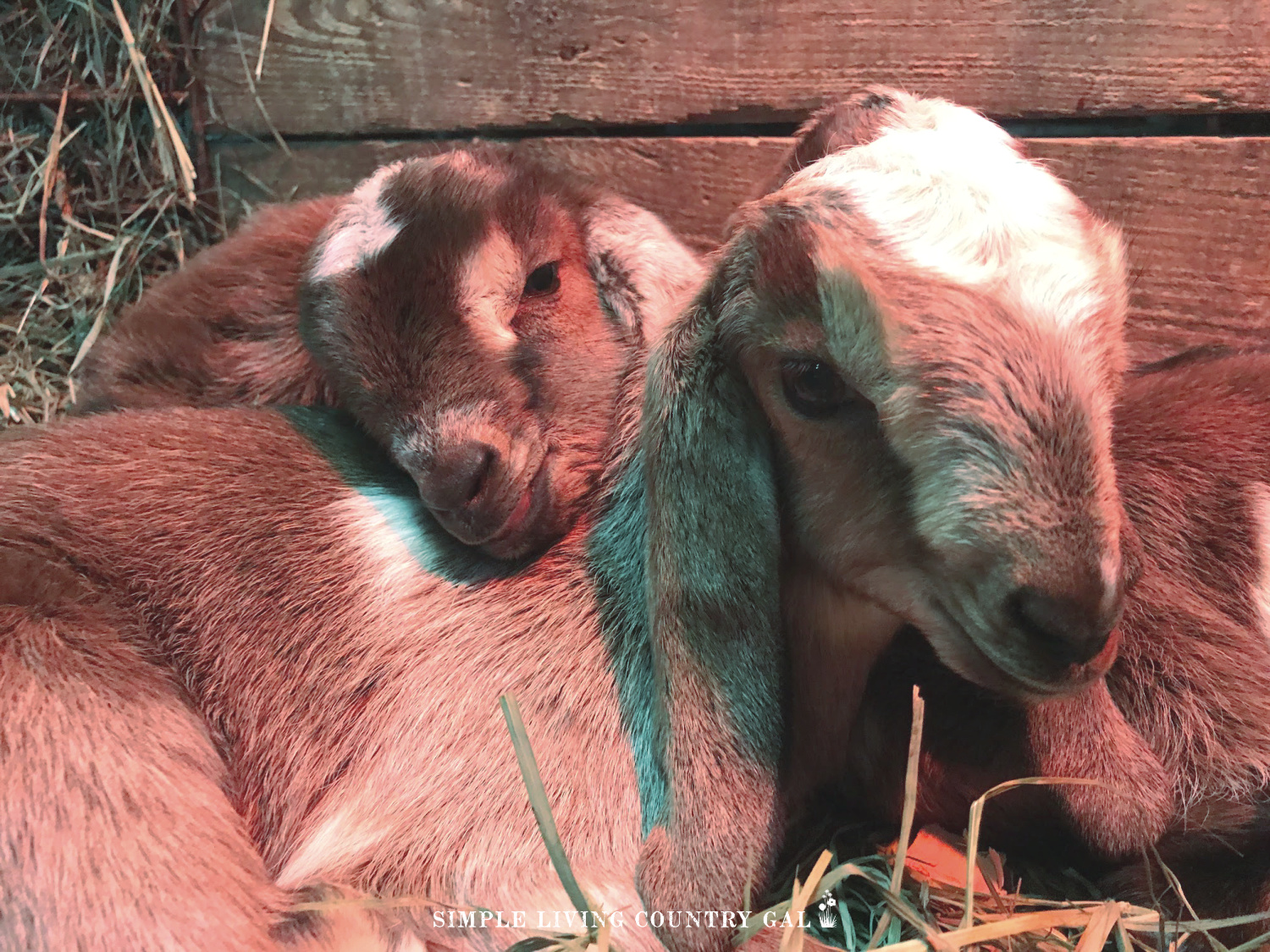
14. Bucket of warm and soapy water. I had this for the first time last year and I was surprised how much I used it. Things get messy when your goat kids and having a place to clean up is nice to have on hand.
I suggest using a bucket with a lid to keep the water warm longer. We use an old ice cream bucket, and that seems to be just the right size.
15. Baby monitor. This item is not meant to be kept in the goat birthing kit but rather in the barn before kidding even starts. The one I have linked to here is the exact one I own and will reach up to 1000 feet.
We can’t be in our barns 24/7, and having a baby monitor lets us hear if things start to happen. It is quite easy to tell if a goat is in labor. The sound of her “pushing” is easy to hear.
During my first year, I went out to our barn every single hour around the clock and found myself exhausted and my goats skittish from my constant interruptions.
Remember most goats deliver just fine on their own and some even prefer it. By keeping a little distance and only jumping in if needed you will keep the kidding process a relaxed one.
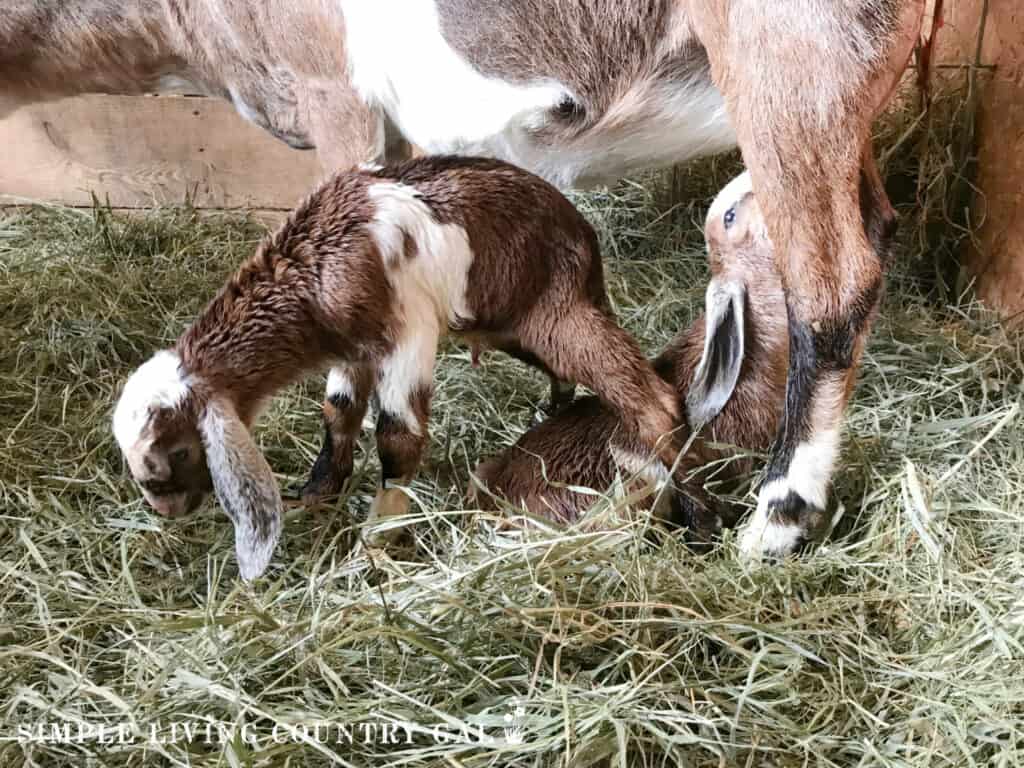
16. Selenium Gel. Used if you live in a deficient area. Our area is very deficient in Selenium so we always give our newborn kids a Selenium supplement gel.
Selenium can mean life or death to a newborn goat. Check with your County Extension and your Veterinarian to determine if your goats will need a Selenium supplement and for the correct dosage.
Giving too much Selenium is just as dangerous as a deficiency. Do not just give it, do your homework and ask your vet before you administer any medications even over the counter. There is a different gel for adult goats and goat kids, make sure you use the correct gel on your goats.
17. Pure blackstrap molasses. This is used mainly for your momma goat. My goats love water with molasses, and it gives a nice energy boost that is needed after the hard work of delivery.
Molasses are filled with vitamins and minerals and by combining it with water it will help replenish your goat’s fluids as well. Molasses can also help treat ketosis in goats that can occur in late pregnancy or right after delivery.
Extra goat kidding kit items
These next items are not necessary, but good to have just in case a problem arises.
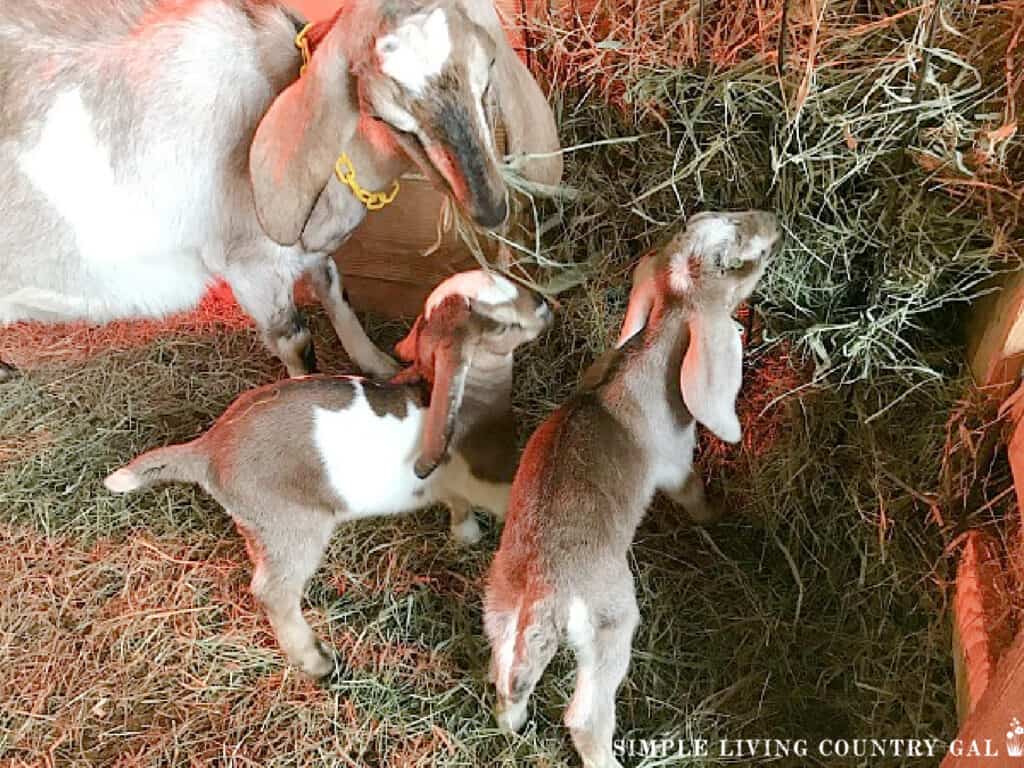
Disclaimer: In accordance with FDA guidelines, the information and products offered on this website are not intended to diagnose, treat, cure, or prevent any disease. I am not a medical professional. Before administering any medications to your animals please contact a veterinarian first.
1. Leg snare. This will help you to keep the legs in the proper position during delivery. It will also help to pull a kid if the doe is having a difficult time delivering.
Sometimes things get very wet and slippery and your hands just can’t get a grip. With a snare like this, you will ensure you have a good hold on the kid.
SLCG Pro Tip: If you help to pull a goat kid, be sure to use steady pressure, working with the contraction as your doe as one. Keep the angle at 45 degrees and encourage your goat to remain standing as you pull with her push. If done correctly, you can assist with delivery with less risk of harm to the goat or to her kid.
2. Kid Puller Different than a leg snare, this tool will help in those cases where the kid is just too big for your goat to deliver without your help. A kid puller is basically a loop or snare on one end with a handle on the other.
You place the loop over the kid’s head and feet (it is incredibly important you have all three in the loop before you pull!) and gently pull at a 45-degree angle. Again be sure the goat is standing and you are pulling gently with her pushes.
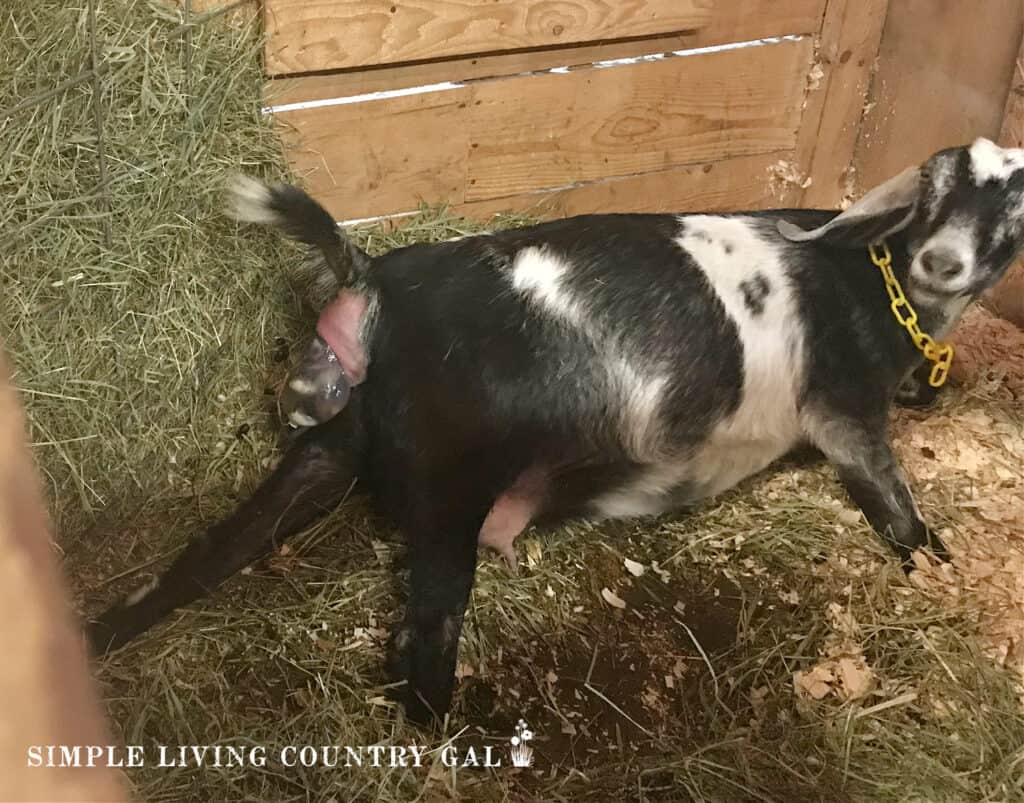
3. A digital thermometer. This is good to have on hand in case you do have an issue with a sick goat. Knowing if you are dealing with a high temperature or a low temperature is vital when deciding on treatment. A goat’s normal temperature is 101.5-103.5
4. Kid Colostrum supplement. In an emergency, this is another essential item to have on hand. It is important to get colostrum into newborn kids, preferably within 20 minutes of delivery, but you do have up to 2 hours.
The sooner they drink that first milk from their mother, the better chance they will have at the healthiest of starts.
Colostrum is full of vital nutrients that baby goat kids must have to thrive. If for some reason there is a medical emergency with the doe and she is unable to feed her kids you can give this replacement in her place. Hopefully, you will never need this, but it is nice to have on hand just in case.
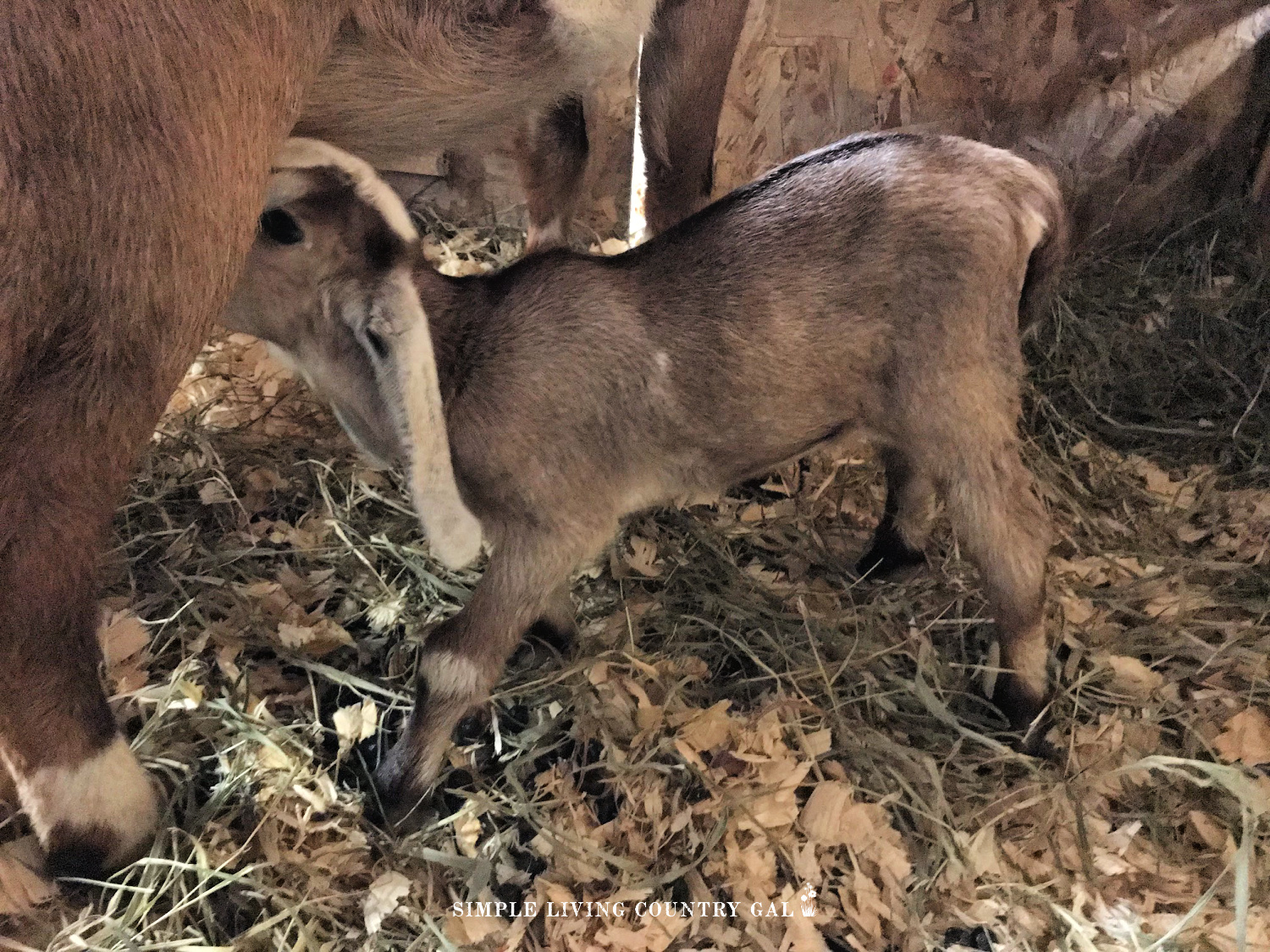
5. Feeding Tube and Syringe. Used for kids that are too weak to eat. I always like to work with my kids to nurse long before I use this option, but there have been times when a feeding tube was needed with our goat kids.
To use a tube I prefer to enter through the nasal passage, I learned this from our vet. It is important that you know for sure the tube is in the belly and not the lungs. If the tube is in the lungs you will most definitely risk the life of the goat kid.
To ensure you have the tube in the belly, I like to use this trick my own vet taught me. Once the tube is in place, put your hand on the kid’s belly and gently blow. If you feel the belly fill up with air you in the right place.
SLCG PRO TIP: It is incredibly helpful to have a good working relationship with your veterinarian. For the first few seasons, I had my vet come out and help me learn certain procedures so I could more confidently do them on my own.
This included taking blood, giving shots both intramuscular and subcutaneous, tube feeding, and dehorning. If you do not have a goat vet in your area, contact your local extension office or 4H local chapter for suggestions of someone you can call.
6. Warming hut. If you have kids in the winter months, having a place to keep the newborn kids that is safe and warm can be a lifesaver. You can use a small dog crate with plenty of straw or cut a hole in a plastic tote and fill it with bedding.
Since I have birthing stalls in my barn, I have found that when plenty of hay is down and momma is close to her kids, they stay quite warm. If it is below freezing I will also add a heat lamp, but please be sure to use every precaution when using one. More fires start in barns with heat lamps, so it is important to double and triple-check your setup to ensure everything is secure and safely installed. Use heat lamps at your own risk.
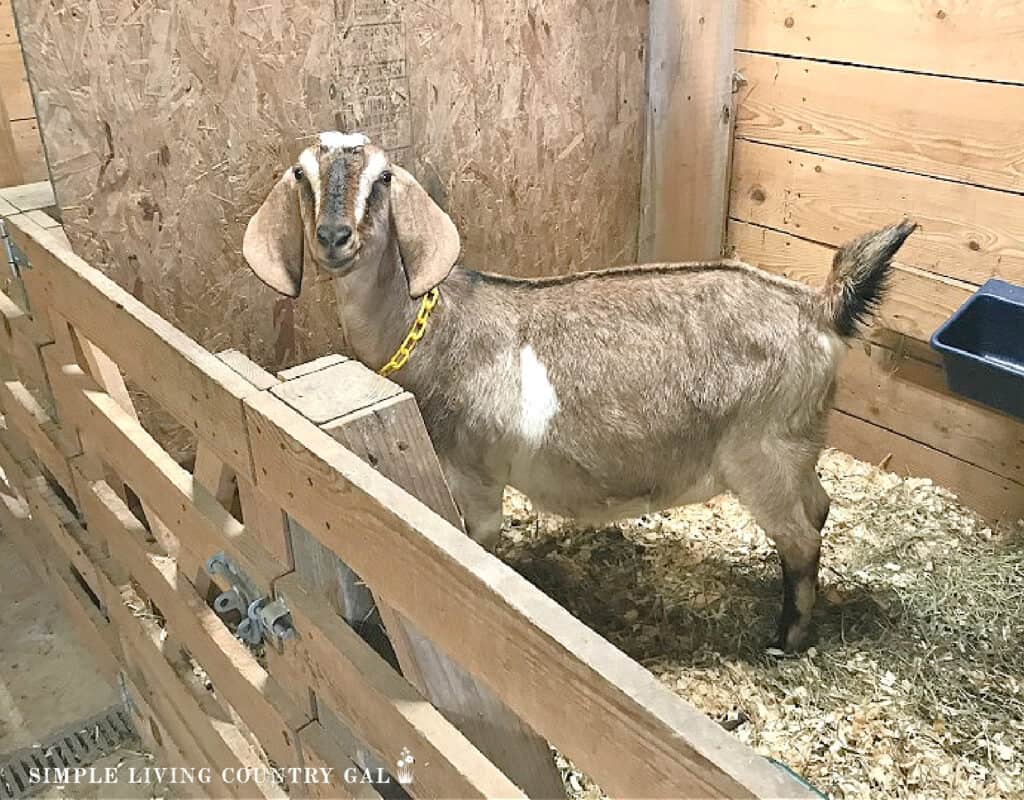
Read: Setting up a kidding stall
Being prepared for goat kidding season can go a long way to keeping you calm and your goat calm as well. It is only natural to be nervous but please remember that only a small percentage of deliveries require intervention.
READ: Goat Kidding Supplies to have
Allow your goats to deliver on their own and just be ready for assistance if needed. Goats have been having kids for many years on their own and alone. You are only there to support and in the rare instance to assist. By having a goat birthing kit with you and being ready to go, you will be able to deal with any situation if it should arise.





